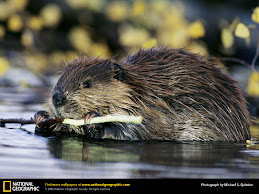 And so this is Christmas, goes the John Lennon classic, and an interesting one it is, as the economy has severely dampened the Yuletide cheer.
And so this is Christmas, goes the John Lennon classic, and an interesting one it is, as the economy has severely dampened the Yuletide cheer.But even with the year’s grim economic news, interest in green gifts continues, and an ocean of web sites offers millions of ways you can give memorable presents that have a net-positive impact on the ecological systems that sustain us. So here are some green ways to conquer a blue Christmas.
Green is a very big umbrella: when purchasing gifts, a few pointers are appropriate. First, local products are very green. Locally purchased gifts require less fossil fuel to get to your door, reducing your carbon footprint.
Second, reused products trump recycled ones. The difference? Recycled materials are melted down and turned into something new, a process that saves materials but requires energy and water. Reused objects save tons on energy and water, again lowering that carbon footprint, the Holy Grail of our time.
Sweet Mabel’s, a gift shop in Narberth, is a homegrown gift shop featuring wild things like clocks pressed from classic rock albums, cuff links made from typewriter keys, goblets formed from soda and beer bottles, purses produced from reclaimed inner tubes and candy wrappers, wine bottle stoppers cleverly crafted from doorknobs, of all things, and even beautiful, colorful baskets hand-woven from telephone wire by Zulu women. (OK, a Zulu hand basket is not local, but it does contribute to the creation of sustainable economies in third world countries, not a bad reason to think globally as well.)
On the web, a Google search for recycled and green gifts offers an ocean of possibilities to wade through. Great Green Goods lists jewelry made from recycled flip flops, of all things, plus tree decorations crafted from recycled oxygen containers found on Mt. Everest and Santas cut from Dr. Pepper cans. Eco-Artware presents bracelets from vintage watch faces and subway tokens. Uncommon Goods provides wine goblets made from tinted automobile glass by people in Colombia and elegant journals and stationery made from—get this—elephant dung by women in Thailand. Yes, elephant droppings are loaded with fiber, and this fiber is turned into beautiful paper—check it out.

Speaking of elephants, Abundant Earth offers tire swings made from reused truck tires that come in the shape of elephants, horses, reindeer, T. rexes, even motorcycles and fire-breathing dragons—a great way to reuse tires and get the kids outside. And speaking of kids, if you want to give them a head start in the post-carbon economy, lots of web sites offer a variety of hydrogen-powered toy cars for kids, which run only on water. Today it’s a toy, tomorrow perhaps the greenest invention of all, an adult hydrogen car.
Adopt a species this Christmas. You can adopt a polar bear, killer whale, panda, tiger—or even an elephant so it can continue pumping out poop for your stationery! From the Defenders of Wildlife, you get plush toy versions of the adopted animals for your child’s room.
Erthnxt.org (not a typo, but a relatively new group connecting kids to the outdoors) offers a variety of tree-planting packages that are extraordinarily priced—go to their web site to see what’s available, and plant away! Other groups allow you to adopt sections of rainforest and coral reef, two of the most important, vulnerable, and species-rich habitats.
One final green gift that benefits the local economy: give a membership or a contribution to an environmental nonprofit—again, your choices are limitless.
Beat the blues: GO GREEN.




 Obama
Obama 


















 In the first days of spring, I’m thinking about kids. For me, growing up in postwar subdivision on the edge of a forest, spring meant time to head back out into the woods. But that’s an anomaly today, and there’s been a lot of attention paid to the state of childhood in postmodern America. Sadly, little of it is good.
In the first days of spring, I’m thinking about kids. For me, growing up in postwar subdivision on the edge of a forest, spring meant time to head back out into the woods. But that’s an anomaly today, and there’s been a lot of attention paid to the state of childhood in postmodern America. Sadly, little of it is good.






